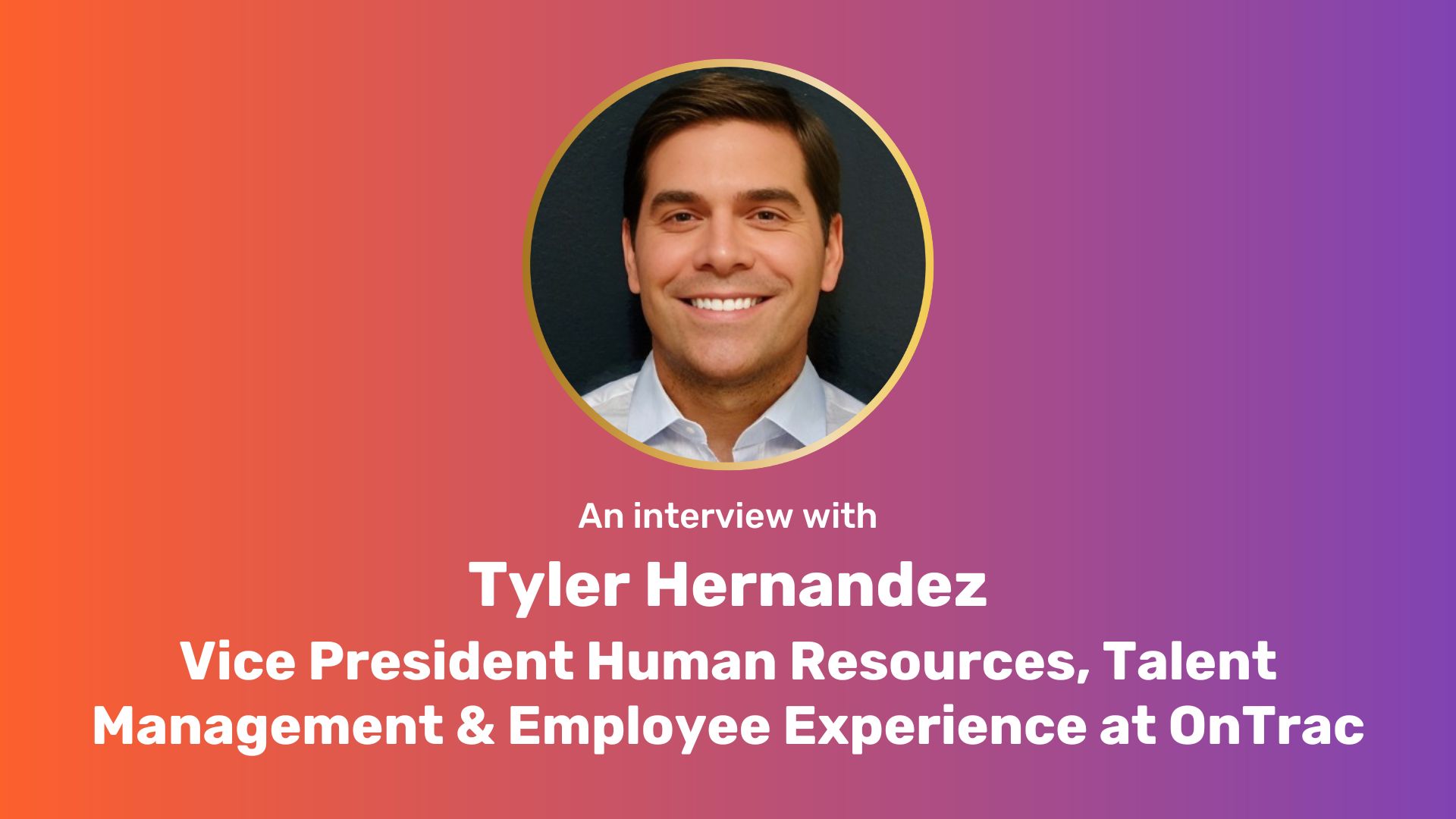Insights from Tyler Hernandez, HR leader at OnTrac
In a conversation with Electives Co-Founder Jason Lavender, Tyler Hernandez reveals how lessons from military intelligence and operations shaped his approach to HR. The result? A serious focus on empathy and learning that not only works, but drives behavioral change.
Key topics covered:
- Why empathy is critical for effective leadership
- How to design learning programs that frontline teams actually use
- What success in learning and development truly looks like
- Using AI to move HR from admin-heavy tasks to strategic partnership
Empathy isn’t optional — it’s what makes leadership work
Tyler learned early that leadership is about understanding people — not just their emotions, but the realities of their work. He credits his time in military intelligence and operations for teaching him how to see across levels, whether he’s on the shop floor or in the C-suite.
"A big part of empathy in business is understanding people’s jobs and what matters to them. That’s how you become a real partner." — Tyler Hernandez
Tyler reminds leaders that empathy means spending time where the work happens. If you want to support teams, you need to know what their day looks like.
Build learning that people actually use for growth
When Tyler stepped into learning and development, he saw the same problem many companies face: programs built for a small slice of the workforce, while frontline teams get left behind.
Here’s how Tyler says to fix it:
- Design for the 95%. Prioritize the people doing the work, not just office teams.
- Deliver solutions that fit the job.
"If the field can’t use it, they’ll build their own. And then you lose consistency and can’t improve." — Tyler Hernandez
Delivery of the learning is not success — adoption and behavior change are
Tyler makes one thing clear during our interview: delivering learning is not the goal — it’s just the starting line.
In Tyler’s view, true success means:
- Getting real-world adoption from end users.
- Seeing sustainable behavior change.
- Waiting 6–12 months before judging effectiveness.
He emphasizes pulling in end-user perspectives from the start, solving the right problems and partnering closely with the people you’re designing for.
Completion rates and satisfaction scores aren’t enough. You need to look deeper: Are people doing their jobs differently? Is performance improving?
"With HQ roles, you give up the luxury of immediate feedback. The impact shows up months later — and only if you’ve done the hard work up front."
Make HR business cases that land
Tyler is clear: HR can’t win support without a clear business case. To secure investment:
- Start with the problem the business cares about.
- Integrate initiatives so they support existing workflows.
- Align with business plans and define how success will be measured from day one.
- Avoid smoke and mirrors and generic solutions because credibility matters.
"If you don’t know the ROI, say you don’t know. It’s better than selling something you can’t back up." — Tyler Hernandez
Use AI to free HR for strategic work
Tyler sees AI as a tool to shift HR from admin-heavy tasks to strategic support. But success requires transparency:
- Tell employees what AI is doing and why.
- Involve teams in shaping the change.
- Don’t aim for perfection before you start — test, learn and adjust.
Strong HR starts with empathy, results-focused learning and business alignment
Tyler’s approach mixes human centricity and practical business results. He doesn’t see HR as a compliance function. He sees it as a strategic driver that thrives when it’s grounded in empathy, focused on real business outcomes and built for people doing the work.
Whether it’s getting learning program adoption right, winning over finance, or making AI useful (not scary), Tyler shows how HR can lead from the front — if you’re willing to stick it out and deliver real impact.


.jpg)


.jpg)
.jpg)
.jpg)


.jpg)